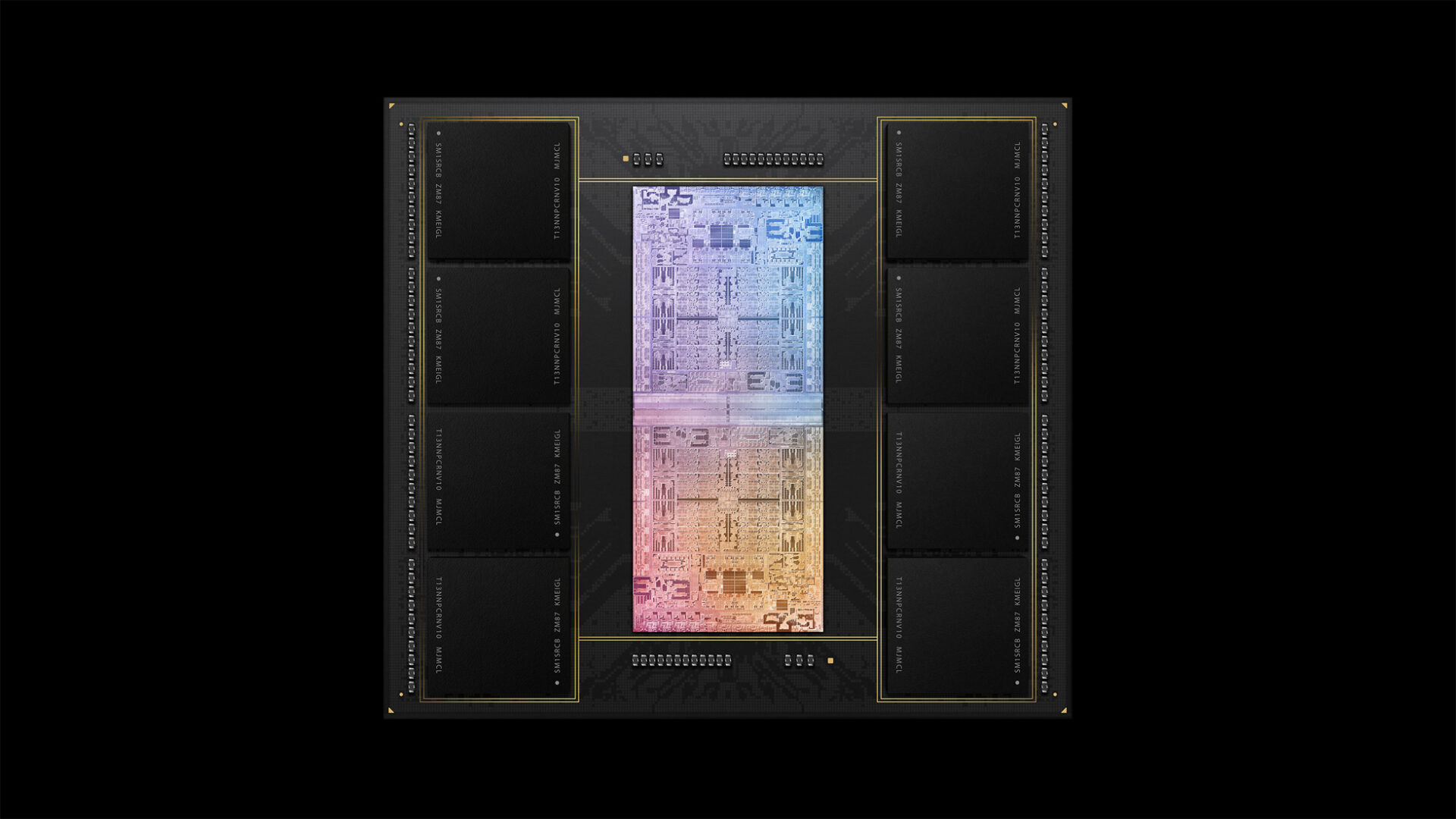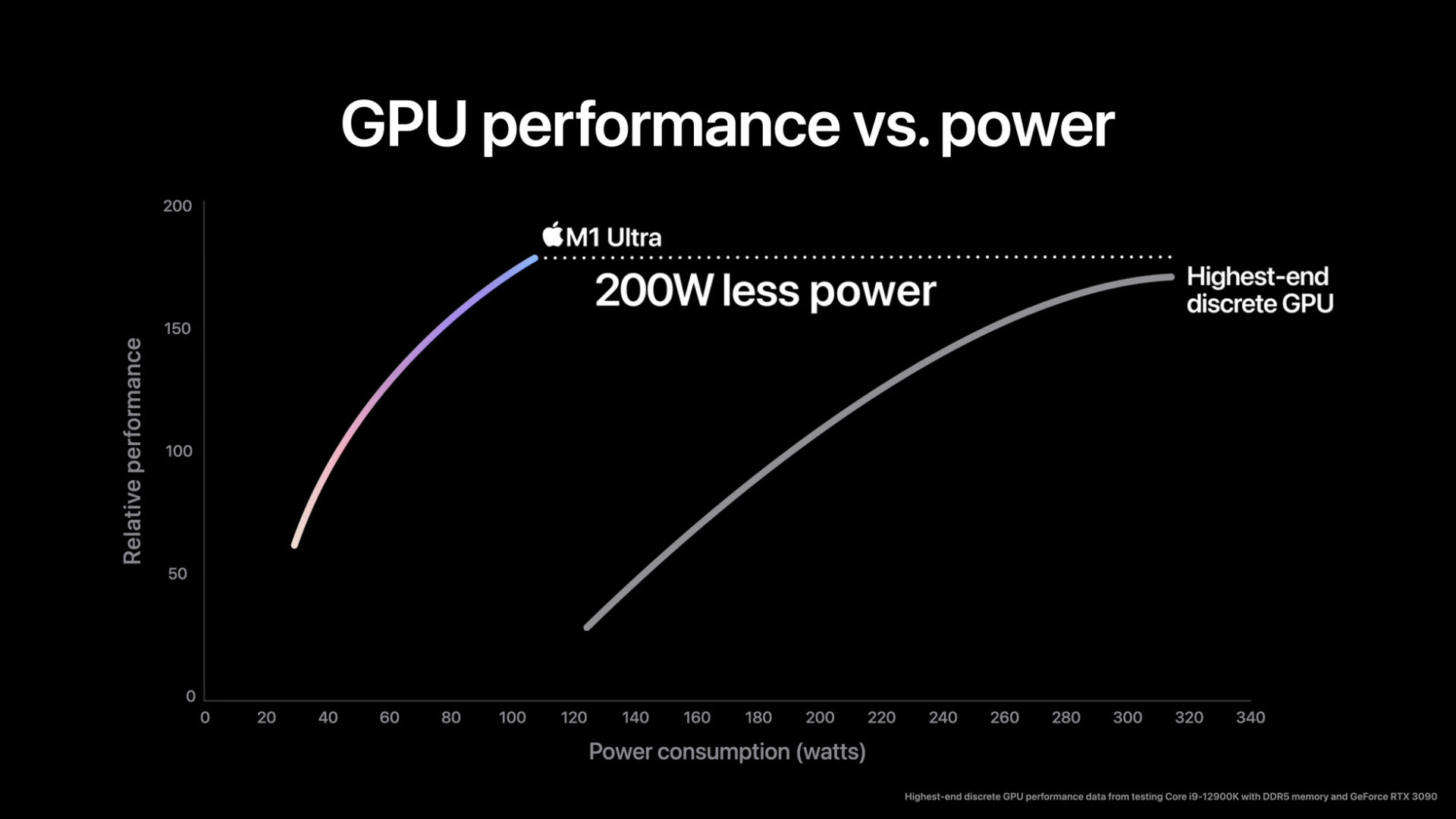
Apple Unveils M1 Ultra: Fastest Apple Silicon Yet

Image: Apple
Apple today announced the M1 Ultra — the company’s fastest desktop System-on-a-Chip (SoC) to date — at its ‘Peek Performance’ event. The company claims the M1 Ultra is “the world’s most powerful chip for a personal computer.”
The tale of Apple Silicon started with the introduction of the M1 in 2020, and Apple’s custom silicon really proved its mettle in power-efficient performance with last year’s M1 Pro and M1 Max chips.
The M1 Ultra takes things to the next level, essentially fusing together two M1 Max chips into one beast of a processor that is 8x faster than the base M1 and truly worthy of the ‘Ultra’ moniker.

Image: Apple
Apple confirmed during the event that the M1 Ultra will be the last addition to the M1 line, and it is a worthy one at that. Here’s everything you need to know about the powerhouse that is Apple’s M1 Ultra chip:
- Comprises 114 billion transistors, the most of any personal computer chip to date.
- 20-core CPU (16 high-performance cores, 4 high-efficiency cores) capable of 90% higher multi-threaded performance than the fastest 16-core PC desktop CPU in the same power envelope.

- 64-core GPU that delivers faster performance than the highest-end discrete GPU currently available for PCs, while drawing 200 fewer watts of power.

Image: Apple
- 32-core Neural Engine capable of running up to 22 trillion operations per second.
- Double the media engine capabilities of M1 Max.
- Available with up to 128GB of high-bandwidth, low-latency unified memory operating at a memory bandwidth of 800GB/s.
The M1 Ultra chip offers a massive leap in performance without making any compromises on what makes Apple Silicon revolutionary in the first place: power efficiency.
To create the M1 Ultra, Apple stitched together the die of two M1 Max chips using UltraFusion — a custom packaging architecture developed by the company that uses a silicon interposer.
UltraFusion allows performance to scale much better than traditional methods of connecting two chips, with a massive 2.5TB/s of low latency, inter-processor bandwidth. UltraFusion also makes it so M1 Ultra behaves and is recognized by software as one chip, meaning developers don’t have to rewrite code for it.
“M1 Ultra is another game-changer for Apple silicon that once again will shock the PC industry. By connecting two M1 Max die with our UltraFusion packaging architecture, we’re able to scale Apple silicon to unprecedented new heights,” said Johny Srouji, Apple’s Senior Vice President of Hardware Technologies.
“With its powerful CPU, massive GPU, incredible Neural Engine, ProRes hardware acceleration, and huge amount of unified memory, M1 Ultra completes the M1 family as the world’s most powerful and capable chip for a personal computer.”
The M1 Ultra powers Apple’s new Mac Studio computer, available to order today from Apple.ca and launching Friday, March 18.



